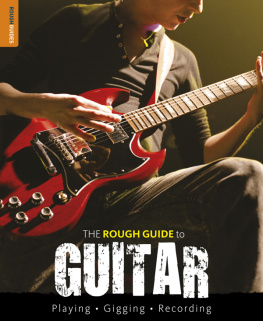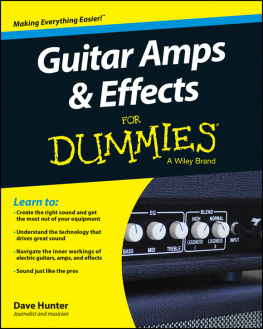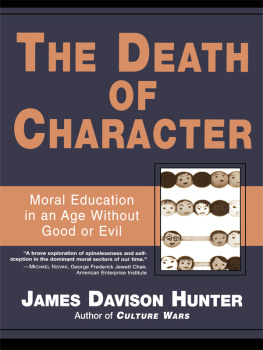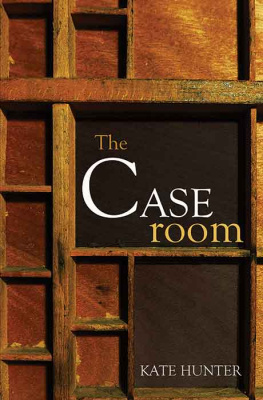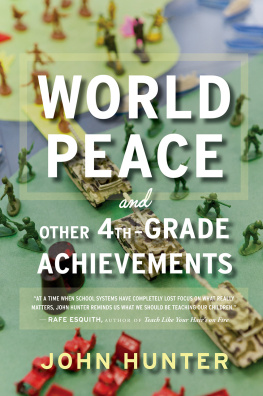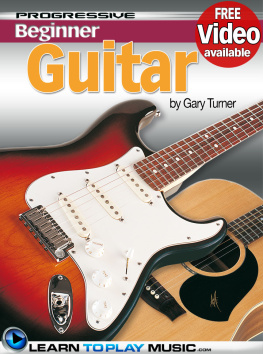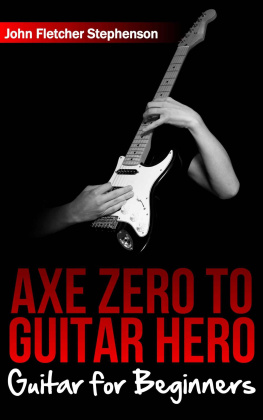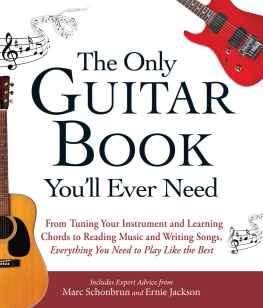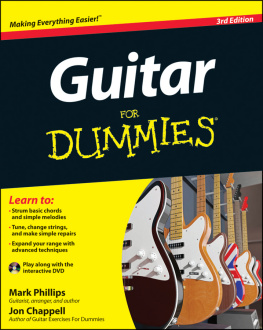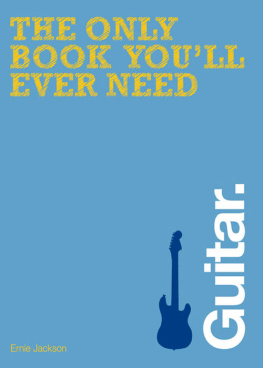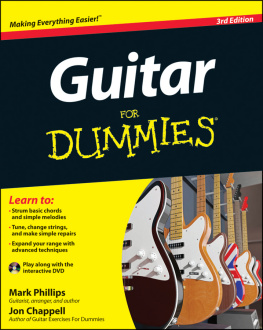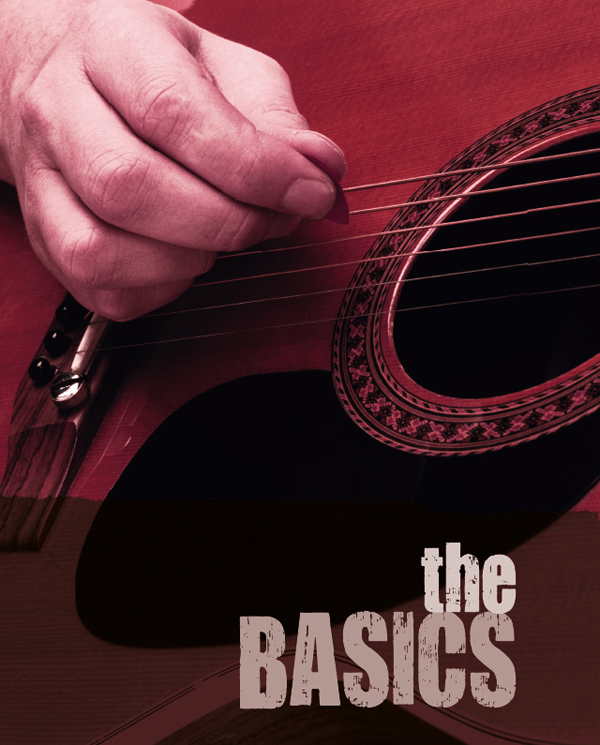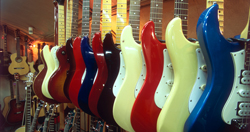Publishing information
This first edition published January 2011 by
Rough Guides Ltd., 80 Strand, London, WC2R 0RL
www.roughguides.com
Distributed by the Penguin Group:
Penguin Books Ltd. 80 Strand, London, WC2R 0RL
The publishers and authors have done their best to ensure the accuracy and currency of all information in The Rough Guide to Guitar; however, they can accept no responsibility for any loss or inconvenience sustained by any reader as a result of its information or advice.
No part of this guide may be reproduced in any form without permission from the publisher except for the quotation of brief passages in reviews.
Dave Hunter, 2011
ISBN 13: 978-1-84836-585-8
This Digital Edition published 2011. ISBN: 9781405388757
E-Book format prepared by DK Digital, London and DK Digital Media, Delhi.
Introduction
Over the past 120 years the guitar has evolved from being a minority status instrument it was associated almost solely with folkies and vagabonds, and often derided by serious musicians to being the most popular musical instrument in the world. This might be reason enough to pick one up, even if it wasnt enormously rewarding and just plain fun. The guitars runaway popularity lies in its combination of accessibility and versatility. If you want to make a whole lot of music on one instrument, the guitar is your best bet.
Virtually any type of music can be played on the guitar. Its ability to carry full chords enables it to accompany a singer single-handedly, or add to a driving rhythm section in a band. At the same time, the many ways a guitar can project single-note lines playing the role of a saxophone, a trumpet, a violin or even a synthesizer make it an adept soloist too. When it comes to virtuosity on the instrument, the sky truly is the limit, and the best guitarists are up there with the most accomplished musicians in the world.
Yet the guitar is also one of the easiest instruments to learn the basics on its as rewarding to strum a handful of chords at a campfire singalong as it is to wail away in the spotlight on stage. In short, much of the guitars beauty and appeal is that you can make of it what you want. But where do you begin? Thats where the Rough Guide to Guitar comes in.
This guide will help you progress from a beginner to an intermediate or advanced player, and give you a good understanding of the instrument in the process. Itll tell you everything you need to know to pick up the instrument and start playing straight away, while offering tips and techniques that will benefit more experienced guitarists.
Along the way, it covers all the crucial facts about guitars themselves, both acoustic and electric, as well as the gear that accompanies them from amplifiers and effects pedals to all the cables and accessories that connect them. And, because so many musicians are taking advantage of the boom in home-recording technology, the guide also provides a quick primer in recording techniques, as well as coaching you in how to put a band together, and how to tackle your first live shows once you do.
Most of all, though, the Rough Guide to Guitar tries to make the instrument fun. Rather than a dry tone and a laborious approach, this guide aims to deliver the information you need to get you where you want to go. It doesnt skimp on the details and the inside information but weve tried to keep things accessible and easy to understand for players who havent yet strummed their first string.
More than anything, this guide revels in the fact that playing the guitar is simply a blast. Its a hobby that just about anyone can enjoy, and which can quickly become so much more. If you never progress beyond learning half a dozen chords that let you noodle away on a few simple songs, theres plenty in here to ease you into a lifetime of guitar-playing pleasure; if you plan to take it to the limit, the Rough Guide to Guitar will take you a long way down that path.
To give you a taste of how far a little knowledge of the guitar can take you, heres a list of twenty well-known songs that can be played with just three simple chords (and although a few might use more than this for flavour, you can play them just fine with three, and sometimes fewer). From here, well tackle the basics and beyond, and have you by the end of the next section playing a song on the guitar with a mere . Enjoy!
Three chords (or less) playlist
- Johnny B. Goode Chuck Berry
- Twist and Shout The Beatles (or the Isley Brothers)
- Thatll Be the Day Buddy Holly
- All Along the Watchtower Bob Dylan (or Jimi Hendrix)
- Whole Lotta Love Led Zeppelin (just two chords!)
- Folsom Prison Blues Johnny Cash
- No Woman No Cry Bob Marley
- All Apologies Nirvana
- Pride and Joy Stevie Ray Vaughan
- Blue Suede Shoes Elvis Presley
- Guitars, Cadillacs Dwight Yoakam (two chords)
- Tumbling Dice The Rolling Stones
- Shook Me All Night Long AC/DC
- Gloria Them (with Van Morrison)
- Born in the USA Bruce Springsteen (two chords)
- Desire U2
- Save It For Later The Beat
- Wild Thing The Troggs
- La Bamba Ritchie Valens
- Bad Moon Rising Creedence Clearwater Revival
Acknowledgements
The author wishes to thank the editors of this guide, Matt Milton and Peter Buckley, its designer Diana Jarvis and its typesetter, Jessica Subramanian, for their stellar work and attention to detail. Additionally, thanks go out to his editors and colleagues at Guitar Player and Vintage Guitar magazines, to Nigel Osborne and Tony Bacon at Jawbone, and to his wife Jess and children Freddie and Flo for their constant support.
More than almost any other musical instrument, playing the guitar well goes hand in hand with understanding how it works. Or at least it should. Too often, however, players hinder their progress by failing to grasp the basics about the guitar itself. Not knowing how the instrument works will sometimes frustrate otherwise promising players.
So in this section well look at the basic function and components of the guitar. Well also get into the basics playing a few simple chords, and showing you the common notation systems used in this guide and others, to help you develop further under your own steam. Its a quick-start guide of sorts these subjects will be covered in far greater depth later on in the guide.
All of this might at first sound a little over-the-top. After all, you dont necessarily need to understand how to tune a piano, much less repair or re-string one, in order to successfully play it you just sit down and put your fingers on the keys. The guitar is truly an oddball contraption, however; and the electric guitar in particular is a rather complex electromechanical gizmo. Acoustic and electric guitars both require frequent retuning, occasional restringing, periodic minor adjustments, and routine maintenance, aside from any repairs necessitated by damage or abuse.
Sure, you can play the guitar without knowing the first thing about any of this, but youd end up stopping so often that you wouldnt get far. Understanding the basics will help your own playing efforts, while increasing your enjoyment of the instrument.

